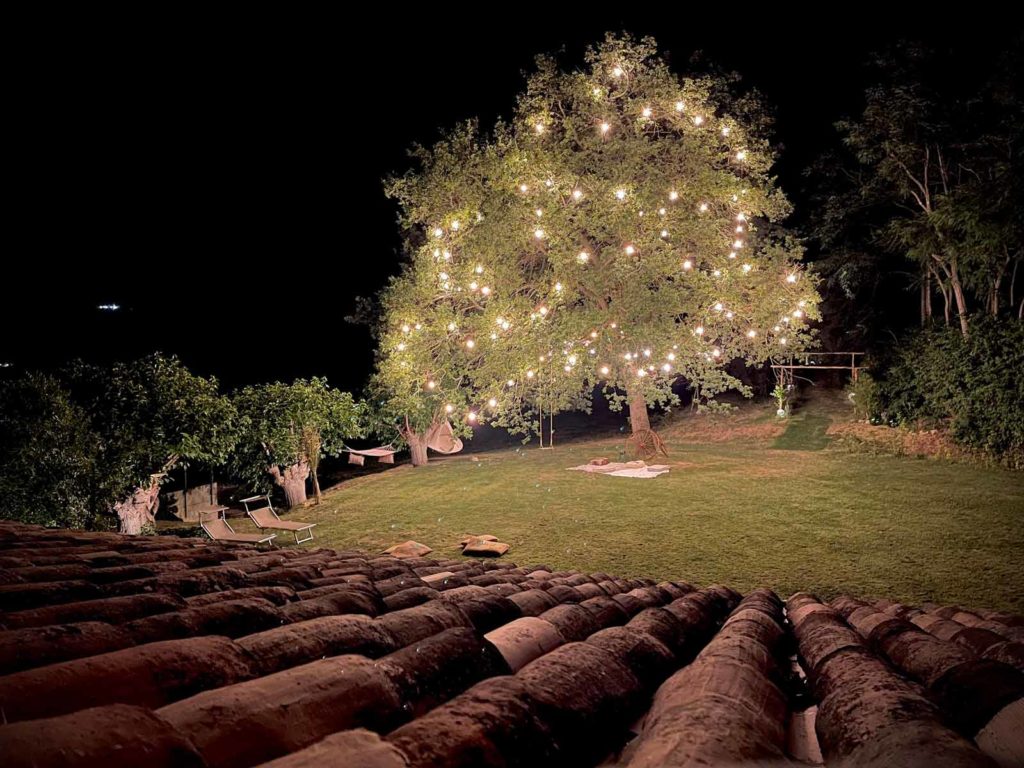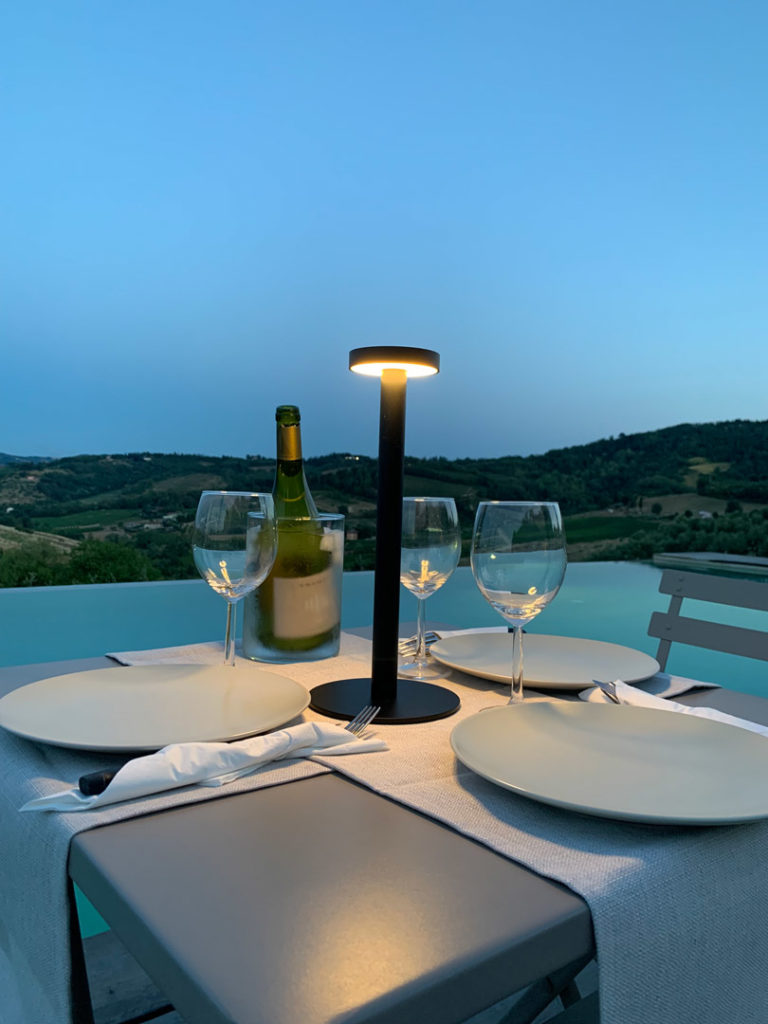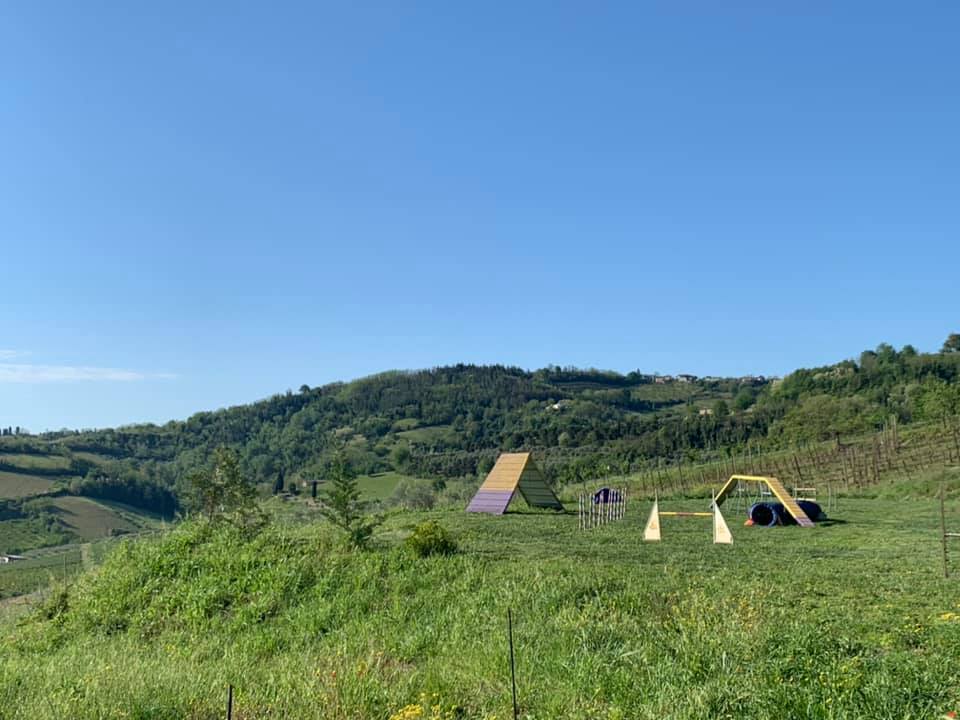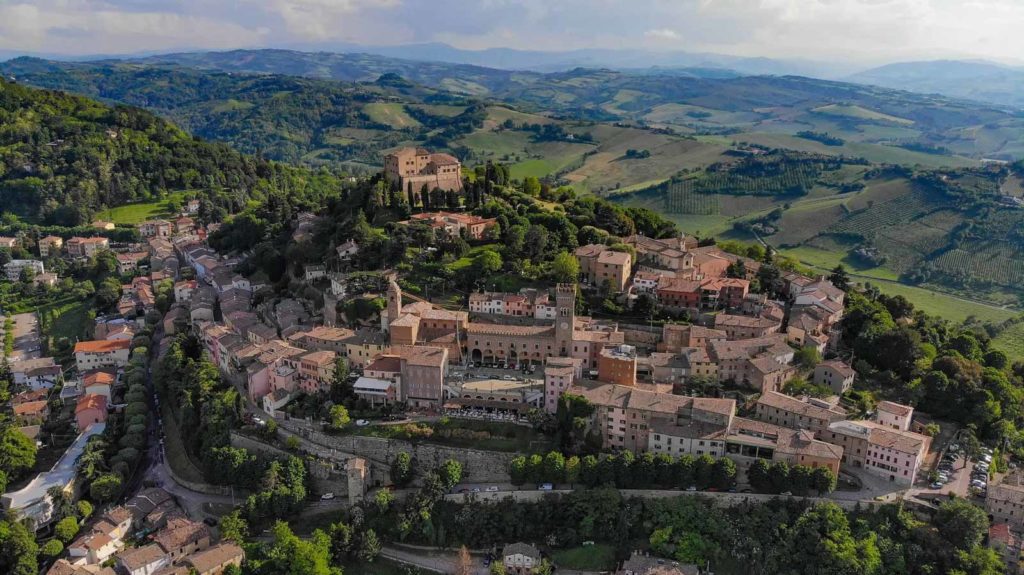Pecoranera is located in Bertinoro in the hamlet of Bracciano, on the road that leads from the center of Bertinoro to Cesena (in via Cerbiano). 500 meters on the left after the junction for Polenta/Collinello, take a small road which is currently unpaved, which leads to the gate of the property.
As soon as we enter we find the main house and the access to the garden on the right, while on the left, in an area that slopes towards the valley, surrounded by a fence, there is the space used for sheltering and grazing goats, donkeys and the chicken coop with geese and chickens.

The manor house is surrounded by a vast garden. The choice of vegetation was made carefully, starting first of all from a strong respect for the place. Each plant element has been designed to best adapt to the agricultural context in which we find ourselves, to the specific climatic conditions and above all it has been designed not to require excessive maintenance and irrigation, taking into account the scarcity of water during the summer season.
Witnesses to the history of this farm are the imposing oak tree that dominates the garden and the five old mulberry trees that during the hot season allow you to enjoy rest under their large foliage, cradled by the hammocks that are anchored to them.

Under the large panoramic window of the kitchen, from which you can enjoy a breathtaking view, there are two large corten tanks which house aquatic plants and fish and in the summer also hundreds of frogs. From there the land slopes down to the area of the annexe: a few years ago, perennial herbaceous plants and grasses were planted in this difference in height which ensure continuous flowering during the summer.
Beyond the garden, the driveway that once led to another property has been transformed into a walk marked by portals of debarked chestnut poles that cover the entire width of the path, interacting with the existing greenery made of apple trees , cherry, apricot, fig, pomegranate, and forgotten fruits. The portals are covered in climbing roses and at the foot there is a long border of muscat rose hybrids, flowering shrubs and herbaceous perennials that mark the eastern limit of the path. The route then fades towards the agricultural landscape to the west where the portals integrate with the fruit plants present; the vegetation, which is richer and more exuberant near the house, gradually becomes simpler until it moves along the country paths among the olive trees and brooms. These frames formed by the chestnut portals accompany the views of the landscape which, thanks to the vegetation and the irregular and natural difference in height of the route, changes at every step, revealing itself little by little and creating continuous interest. In addition to the roses that literally surround the visitor with their flowers and the intense scents from above on the portals and from below along the flowering border, the path is also marked by perennial herbaceous plants: cistus, verbena, perovskie, rudbeckia ensure continuous blooms even when the exuberance of the roses is dampened by the strong summer heat. The plan is to include berry plants (currently near the house in unfavorable light conditions), to enrich the overall effect.

The east side of the property is made up of a series of differences in level that culminate in a large lawn overlooking the splendid surrounding hilly landscape: a natural panoramic terrace. By taking advantage of the conformation of the land, it was decided to amplify the multifunctional character of the area and enrich it with additions that can be exploited differently depending on the scheduled event. The level below the rose path is connected a short distance to the swimming pool area;

for this reason it was decided to make a series of “rooms” available to guests that can act as a space for quiet, rest and shade during the day or as a “private lounge” in the evening. The idea is to create pergolas topped with strawberry grape plants with the effect, once growth is complete, of a real green roof with splendid bunches that frame and perfume the landscape. The structures, designed as relaxation areas, can be equipped with sofas, hammocks etc., and in the event of events such as concerts or dog shows they can become small stands to enjoy the show at any time of day or night.
The last level before the olive grove is currently used as a sports field for dog agility training, but can be considered a large multifunctional space.

To improve the connection with the surrounding landscape, without intervening with fences or fences, it was decided to decorate the edge of this large meadow with a curtain of brooms (a pioneer plant typical of these foothill environments) allowing them to colonize the banks of every level until you reach the avenue of roses; in this way the garden fits gracefully into the landscape. The effect of flowering is massive; the escarpment lights up with scents and golden reflections at that particular moment and is the perfect green background for framing events of all kinds. The project for a vegetable garden-orchard is being defined. The idea of the property is to create corten tubs leaning against the bank of the rose avenue and near the existing fruit trees, where in addition to enjoying an unusual quiet in the shade of the trees and inebriated by the scents of the blooms ( as happened in the ancient “broli” near monasteries and stately villas), vegetables and flowers marry together, forming a space that is not only useful, but also beautiful and can be visited by guests for self-harvesting of the products or possibly also be the subject of educational courses. A way to recover otherwise unused spaces and make them available to guests, who can collect in “pick your own” mode or consume the products collected on site for breakfast and snacks, giving a more evocative and attractive image of Pecoranera.

To create a harmonious environment that favors recovery between the individual and nature, favoring biodiversity within the farm, it was decided to recover ancient native and now little-known varieties (the so-called forgotten fruits) such as Volpina pear, blackthorns, cornelian cherries, rowanberries , pomegranates, azzeruole or the “abundance” apple tree planted several decades ago by the previous owners. A curtain of hazelnut and almond trees, which alternate with each other, act as a screen between the new olive grove and the road leading to the vineyards and the old jujube tree, which once leaned against the demolished house, was recovered with a delicate intervention of replanting a few meters from its original site, once the house has been rebuilt; now it is found thriving at the edge of the garden.
Bertinoro
The area in which Pecoranera is located, the Bertinoro hill, is a village of medieval origin, defined as the “balcony of Romagna” for the magnificent panorama of the sea, the Romagna plain and the first hill, which can be enjoyed from every point of the town . It is one of the hilly areas in the region most devoted to the cultivation of vines: around the village there are around a thousand hectares of vineyards (mainly Sangiovese and Albana) but also the native Cagnina and Pagadebit. The choice to create rooms and welcome guests in Pecoranera fits perfectly with the Bertinorese tradition: in the central square of the town there is the famous Column of Hospitality.

The column dates back to 1218 and is still a cause for celebrations today when every September the houses of the Bertinoresi open to guests who come for tourism, study, friendships and to offer them the Romagna lunch on the day of celebration. On the occasion of this day, Pecoranera would like to adhere to the tradition of hosting a couple of “foreigners”, offering them an overnight stay and breakfast and a day together to celebrate the value of exchange and diversity in this way, doing activities and having lunch together. Food is another strong element of this area: Bertinoro is full of restaurants, taverns, trattorias and refreshment points, where you can appreciate Romagna gastronomy at the highest levels.
In the Pecoranera project there is the desire to make the most of the synergy with other local companies that deal with food and wine. Overlooking the hill is the Rocca, well restored and now home to the University Residential Center and the Interreligious Museum. Among the most illustrious guests who were able to enjoy Bertinore’s hospitality there was even Dante Alighieri: in the hills around the village there is Polenta from which Guido da Polenta, lord of Ravenna who welcomed the exiled poet who certainly stopped in the ancient Pieve of Lombard origin, still splendidly preserved today.
From 2 to 5 September 2021, the 95th edition of the Bertinoro Hospitality Festival dedicated a series of cultural events to pay homage to the Supreme Poet, with the eloquent title of “From the Dark Forest to the Stars”, which attracted big names to the hill of music, entertainment and culture and a large number of tourists. Bertinoro is part of the “Authentic Villages of Italy”, an association that brings together small and medium-sized municipalities, with the aim of creating a model of sustainable local development, respectful of places and people and attentive to the valorization of local identities.

Among the numerous cultural, musical and sporting events that enrich the hill’s summer season, it is worth mentioning the passage of the “Granfondo 9 colli” and the “Ironman” thriathlon competition, in which the Superman-participants compete not only in swimming and running, even in a 180 km route reaching Bertinoro by bicycle.